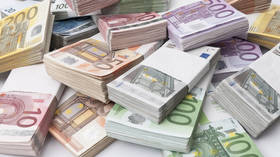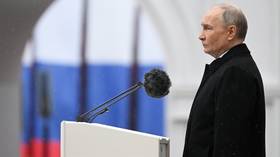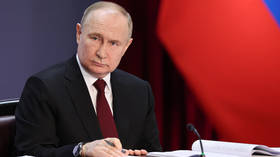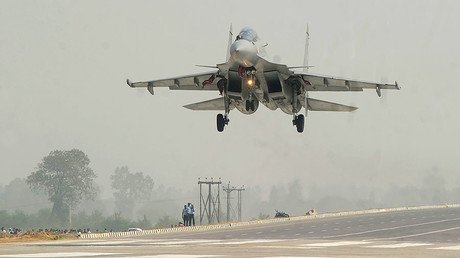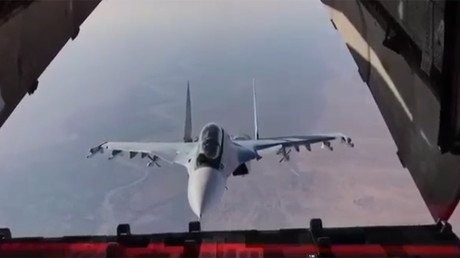Why Russia isn’t worried about lower oil prices

Even as Saudi Arabia has scrambled to prevent a bust in the oil market, so far failing to head off a dramatic price slide, Russia seems just fine with prices where they are.
Russia is a key piece of the oil price puzzle. OPEC, once a coalition of oil-producing members that made joint decisions to maintain market stability, has morphed into a Saudi-led cartel that desperately needs Russian cooperation to strengthen the group’s efforts. Many OPEC members are either at maximum capacity, are suffering from production declines at aging fields, or are characterized by instability, making any promises to boost or cut production hollow. The only countries unaffected by such issues are Saudi Arabia and its new strategic partner, Russia.
But Russia is not as desperate for higher oil prices as is Saudi Arabia. There are a few reasons for this. One of the key reasons is that the Russian currency is flexible, so it weakens when oil prices fall. That cushions the blow during a downturn, allowing Russian oil companies to pay expenses in weaker rubles while still taking in US dollars for oil sales. Second, tax payments for Russian oil companies are structured in such a way that their tax burden is lighter with lower oil prices.
Saudi Arabia needs oil prices at roughly $84 per barrel for its budget to breakeven. The international outrage over the murder of Saudi journalist Jamal Khashoggi has also left Riyadh isolated. The hyped-up economic reform plans from crown prince Mohammed bin Salman are in tatters, and Saudi Arabia is back at the drawing board, in desperate need of higher oil prices.
Russia is more stoic in the face of an oil price meltdown. “The drop in oil prices hardly bother us because our budget is based on $42 a barrel,” First Deputy Prime Minister Anton Siluanov told reporters in Moscow on December 26. “The price can stay around $40-$50 for a time — six months or a year,” Siluanov said, before adding: “We think this won’t last long.” But even if the price downturn does persist, Russia won’t be in trouble because of its ample foreign exchange reserves, he said.
Read more on Oilprice.com: The battle for Syria’s oil region
Igor Sechin, the head of Russia’s state-owned Rosneft, said that oil prices “should have stabilized, because everyone was supposed to be scared” by the enormous OPEC+ production cuts. “But nobody was scared,” he said, according to Bloomberg. He blamed the Federal Reserve’s rate tightening for injecting volatility into the oil market, because traders have sold off speculative positions in the face of higher interest rates.
Oil-based economy? Russia’s non-energy exports go boom https://t.co/yo9Lxn2Yvcpic.twitter.com/RmaHlXBaKl
— RT (@RT_com) December 21, 2018
The bottom line is that Russia does not feel the same urgency as Saudi Arabia. It was only a matter of days after Russia agreed to the OPEC+ agreement — which called for production cuts of 1.2 million barrels per day (mb/d) beginning in January — that Russian officials suggested that their output would only decline slightly at the start of the New Year.
Russia’s oil minister Alexander Novak said in mid-December that output could dip by a modest 50,000 to 60,000 bpd in January, far short of the roughly 230,000 bpd of cuts Russia is supposed to take on. That would put Russian output at about 11.35 mb/d, not far from the post-Soviet high of 11.41 mb/d hit in October. “Everything will depend on technological and climate possibilities. We will get proposals from the companies,” Novak said, according to Reuters. “We will see how the situation would evolve.”
Read more on Oilprice.com: What’s in store for OPEC in 2019?
At the same time, Novak offered the market some assurances that the OPEC+ coalition would step in to stabilize the market if the situation deteriorates, suggesting that OPEC+ has the ability to call an extraordinary meeting. He told reporters in late December that the market still faces a lot of unknowns. “All these uncertainties, which are now on the market: how China will behave, how India will behave... trade wars and unpredictability on the part of the US administration... those are defining factors for price volatility,” Novak said.
Nevertheless, Novak predicted the 1.2 mb/d cuts announced in Vienna would be sufficient.
Approximately 370 km of Nord Stream 2's pipeline have been laid so far https://t.co/608LYoQAHe
— RT (@RT_com) December 24, 2018
Some analysts echo Novak’s sentiment that, despite the current panic in the market, the cuts should be sufficient. “We are looking at oil prices heading towards $70 to $80…quite a recovery in 2019. That’s really predicated on the thought that first of all, OPEC still is here. And I think that the market is underestimating that they are going to cut supply by 1.2 mb/d,” Dominic Schnider of UBS Wealth Management told CNBC. “And demand looks healthy…so we might find ourselves into 2019 in a situation where the market is actually tight.”
This article was originally published on Oilprice.com





